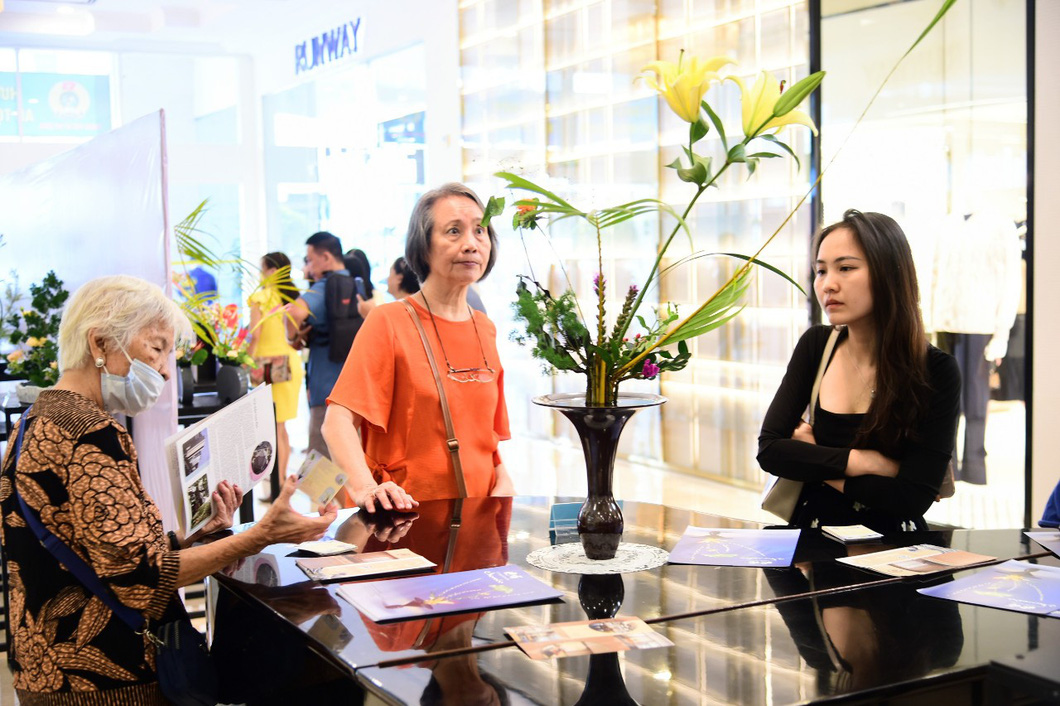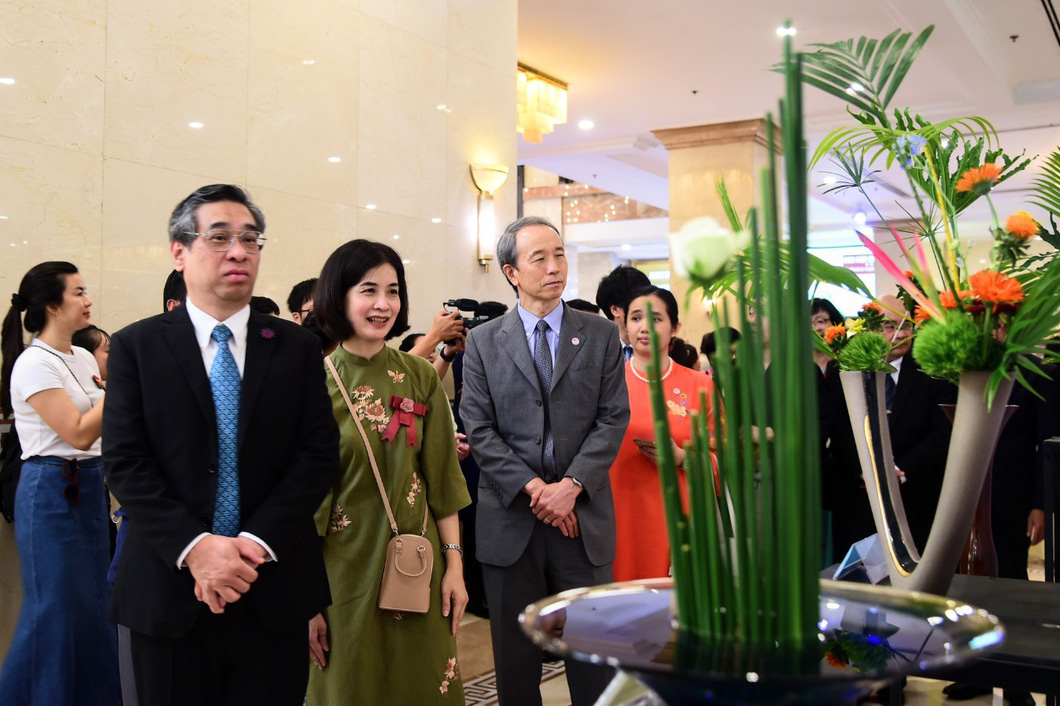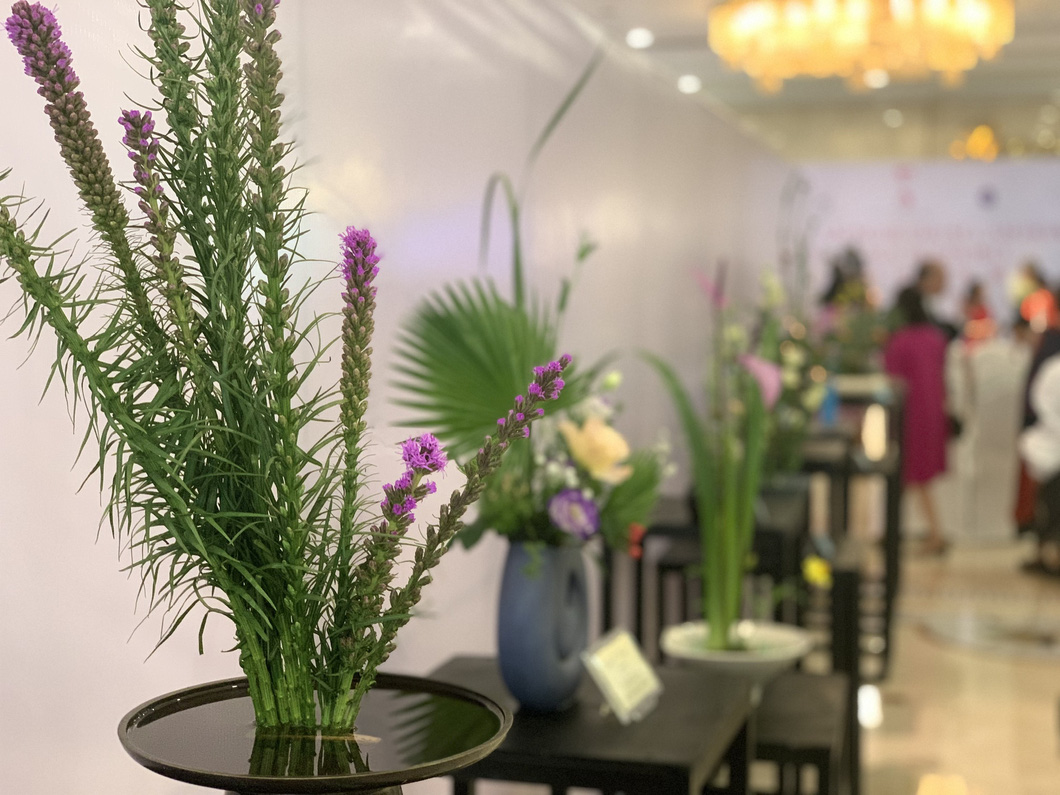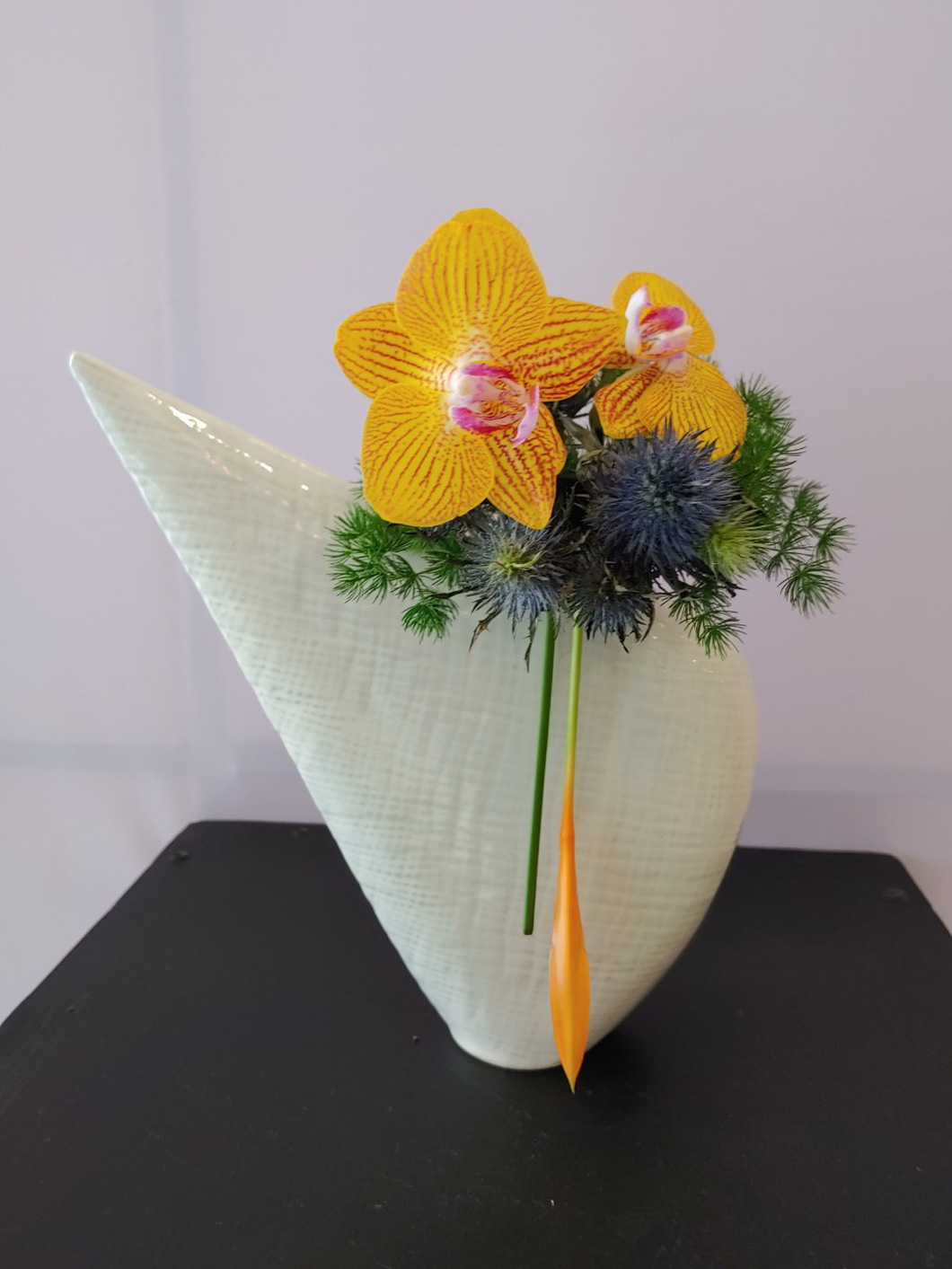The Vietnam-Japan Friendship Association of Ho Chi Minh City (VJFA) partnered with the Ikenobo Vietnam Center Study Group to launch the second Ho Chi Minh City Ikebana exhibition on Saturday. The exhibition was held to promote cultural exchange between Vietnam and Japan, and to help bring the two countries closer together. Attendees were delighted to see the beautiful works of art created by the Ikenobo members, which showcased the beauty of Ikebana and the long-standing friendship between Vietnam and Japan. Various workshops were also conducted for those interested in learning more about the art of Ikebana. All proceeds from the exhibition went towards charities that help support the underprivileged and vulnerable in Ho Chi Minh City. The event was a great success and provided a unique opportunity for people to learn more about Ikebana and Vietnamese-Japanese relations.
Through the use of different flowers, plants, and leaves, Ikebana is an arrangement that seeks to bring out the inner beauty of the natural world.
Ikebana is the Japanese art of flower arrangement. It is an ancient practice that dates back centuries, with the first known arrangement taking place in the 6th century. Through the use of different flowers, plants, and leaves, Ikebana is an art form that seeks to bring out the inner beauty of the natural world. It is known for its harmony and balance, which is achieved by using the elements of line, form, and color. Ikebana also has a spiritual component; many practitioners believe that the act of arranging flowers is a meditation that brings the artist closer to nature. Whether for decoration or meditation, Ikebana is an art form that has been appreciated for centuries and continues to be practiced around the world.
|
|
| A flower arrangement under Japanese professor Ishiwata’s instructions on display at the second Ho Chi Minh City Ikebana exhibition. Photo: Huu Long / Tuoi Tre |
The event, set to wrap up on Sunday at Rex Hotel Saigon in District 1, is part of a series of activities to mark the 50th anniversary of Vietnam-Japan diplomatic ties (1973-2023).
The fifty Ikebana works being showcased at the exhibition represent 50 years of diplomatic relations between the two countries.
With various flowers such as roses, gerbera daisies, red carnations, lotus flowers and orchids, Professor Ishiwata from Japan’s Ikenobo College and 25 members of the Ikenobo Vietnam Center Study Group crafted stunning and meaningful flower arrangements.
Ikebana works have long been admired for their ability to capture the beauty of nature and the unique characteristics of modern life. From traditional Japanese arrangements to modern abstract compositions, these creative pieces showcase a variety of styles and demonstrate the artist’s skill in combining natural elements with modern aesthetics. With a careful balance of colors, textures, and shapes, these works of art bring a unique beauty to any space.
With the traditional Japanese art of floral arrangement, flowers not only boast their beauty, but they also convey the growth of roots, leaves, and branches, according to Professor Ishiwata.
Nguyen Thanh Tu, the head of the Ikenobo Vietnam Center Study Group and an experienced Ikebana practitioner, has noted that flower arranging has taught her how to bring together different blooms in harmony and unison. By engaging in the art of Ikebana, she has developed her skills in crafting aesthetically pleasing arrangements that connect the various flowers in a beautiful way.
The art of Ikebana helps to bridge the gap between Vietnamese and Japanese lovers of the Japanese art form, according to the speaker.
Ono Masuo, Japanese Consul General in Ho Chi Minh City, expressed his hope that the city’s residents will gain a deeper understanding of Japanese culture through traditional Ikebana works.
Professor Ishiwata graduated from the Tokyo University of Arts with a degree in lacquer painting in 1987. After that, he started taking up Ikebana, a traditional Japanese form of flower arrangement.
Apart from giving lessons on the art, he often showcases his Ikebana works at exhibitions as a member of the Japan Ikebana Art Association.
|
|
| From left: Nguyen Phuoc Loc, chairman of the Vietnam-Japan Friendship Association in Ho Chi Minh City, Nguyen Thanh Tu, head of the Ikenobo Vietnam Center Study Group, and Ono Masuo, Consul General of Japan in Ho Chi Minh City, attend the second Ho Chi Minh City Ikebana exhibition. Photo: Huu Long / Tuoi Tre |
|
Nguyen Manh Hung, former principal of Hong Bang International University in Ho Chi Minh City, recently attended the second Ho Chi Minh City Ikebana exhibition. Hung was seen taking photos of the flower arrangements on display, capturing the beauty of the various creations. He was especially captivated by the intricate designs and vibrant hues of the flower arrangements. The Ikebana exhibition is held annually in Ho Chi Minh City, allowing locals and visitors to appreciate the art of flower arrangement. The event also serves as a platform for Ikebana enthusiasts to showcase their talent and share their knowledge of the craft. The photo above shows Hung admiring and capturing the beauty of the flower arrangements at the exhibition. It was taken by Hoai Phuong of Tuoi Tre newspaper. |
| Nguyen Manh Hung, former president of Hong Bang International University in Ho Chi Minh City, takes a photo of flower arrangements at the second Ho Chi Minh City Ikebana exhibition. Photo: Hoai Phuong / Tuoi Tre |
|
|
| A flower arrangement on display at the second Ho Chi Minh City Ikebana exhibition. Photo: Hoai Phuong / Tuoi Tre |
|
An Ikebana work is showcased at the second Ho Chi Minh City Ikebana exhibition. Ikebana is a Japanese art form of flower arranging, and the second Ho Chi Minh City Ikebana exhibition was held recently. Visitors were able to see many beautiful and creative Ikebana works, each of which was created with a unique combination of flowers and other plant materials. The photo above shows one of the many Ikebana works on display. It is a stunning example of this traditional art form, and it serves to remind us of the beauty of nature and the skill and creativity of those who practice the art of Ikebana.
|
| An Ikebana work is showcased at the second Ho Chi Minh City Ikebana exhibition. Photo: Huu Long / Tuoi Tre |
Stay up to date on the latest news about Vietnam by liking us on Facebook or following us on Twitter!

 On display at the second Ho Chi Minh City Ikebana exhibition was a flower arrangement under the instructions of Japanese professor Ishiwata. The photo of the arrangement was captured by Huu Long of Tuoi Tre.
On display at the second Ho Chi Minh City Ikebana exhibition was a flower arrangement under the instructions of Japanese professor Ishiwata. The photo of the arrangement was captured by Huu Long of Tuoi Tre.
 Visitors to the second Ho Chi Minh City Ikebana exhibition were treated to an array of stunning flower arrangements. The event showcased the creative talent of Ikebana practitioners in the city and displayed a variety of visually appealing floral arrangements. The exhibition was a great opportunity for visitors to appreciate the art of Ikebana and to take in the beauty of the flowers on display.
Visitors to the second Ho Chi Minh City Ikebana exhibition were treated to an array of stunning flower arrangements. The event showcased the creative talent of Ikebana practitioners in the city and displayed a variety of visually appealing floral arrangements. The exhibition was a great opportunity for visitors to appreciate the art of Ikebana and to take in the beauty of the flowers on display.


